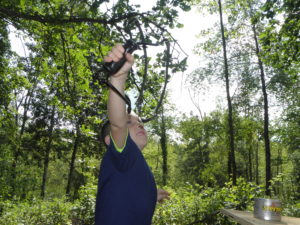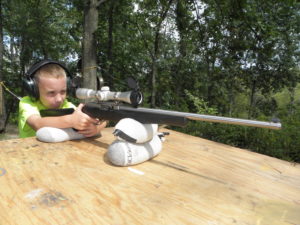Making Memories
By Glen Wunderlich
After some long, summer days updating a vintage tractor for the annual Mid-Michigan Old Gas Tractor Association show, it was time to change gears, so to speak. I had realized that summer had just about slipped away amid the frantic preparations that took me to the brink of the show’s start. The all-consuming commitment had left little time to enjoy the outdoors, but that was about to change.
I made arrangements for our 7 year-old great grandson to visit before the start of school and to be part of a camping experience that’s becoming a tradition of sorts.
Before the campfire was lit on the first evening, our agenda included a scouting mission to a favorite hunting blind, where we would sit and watch for what Mother Nature had prepared.
The impressionable youngster tagged along a few years ago and always seems to recall a lone deer we encountered along a riverbank. The doe watched us from afar as we returned the favor. It was nothing more than that, but in a brief moment, the child’s wonderment of wildlife had been ignited.
With camp set up, we hiked to the lookout, as the bright sun began its routine descent toward the horizon. But, these fleeting moments would be nothing but routine.
The curtain opened with a doe and spotted fawn feeding about 175 yards from us in a lush legume plot. Soon, a few other deer entered the stage and browsed the smorgasbord of nutritious chow. However, when a mature 8-point buck joined the meeting, we were at full attention.
This was no basket-racked, run-of-the-mill yearling; the headgear was a bit wider than the spread of its ears – a sure sign of legitimacy. And, although mating season is still months into the future, nobody told this brute. He did his best to stir things up, nosing his way around possible mates, but was forced to simmer down by the maternal bosses. The young man at my side was all eyes, as he had seen his very first buck. As the amorous animal finally exited the field, there was plenty of light for scene 2 to begin, and that’s when things got more than peculiar.
We kept track of each deer in view and couldn’t help but notice an energetic buck fawn directly in front of us at about 150 yards. A white pine with the lower branches some 6 feet off the ground was the target of a testosterone-charged fawn, as it sprung from its hind legs to contact the soft branches with its head – a sure sign of the imminent mating season. Then, as high as it could stretch, it would violently spin its feet high into the branches with the RPMs of a Cessna, knocking clouds of pollen into the still air. The experiment was concluded by a couple of laps around the tree in the dry, bare ground that had just been prepared for planting. Dust flew everywhere, as the scene was repeated many times in the span of about 5 minutes.
Before the sun had fully set, another antlerless deer decided to take a few hot laps in the midst of the legume plot and that of its brethren. For no apparent reason, the feisty doe felt the need for speed, as it raced back and forth for hundreds of yards no less than 3 times.
As we quietly snuck back to camp, I had realized that the uniqueness of the show for the youngster’s consumption would be another one locked in the memory bank – not just for the young man, but for grandpa, as well.










